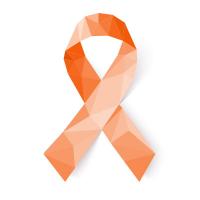
The adoption of Cxbladder Triage in primary care
The adoption of Cxbladder is widely supported by urologists in New Zealand and in routine use within public hospitals, making it accessible to over 75% of the population. Cxbladder Triage is now gaining increasing traction and uptake in primary care through co-developed primary care referral pathways.
As a frontline diagnostic, Cxbladder Triage is being used by GPs in patients presenting with haematuria to help reduce the need for secondary referral. Working alongside other tests and procedures, Cxbladder accurately identifies those patients who have a low probability of bladder cancer and can be safely managed within the community by their GP. In prioritising patients who require a secondary care referral to urology, this utility supports a new model for clinical practice and resource utilisation, providing care to the greatest number of patients while offering clinically actionable information at the earliest point in the care pathway.
To generate an accurate and reliable result, Cxbladder Triage, developed by Pacific Edge Ltd, analyses the presence of five biomarker genes in a patient’s urine sample. These are used alongside a patient’s information on known bladder cancer risk factors such as age, gender and smoking history to highlight those who have a low risk of having the disease.
By identifying these patients in primary care, Cxbladder notably reduces the need for urology referral and further invasive testing, such as a cystoscopy. This new streamlined standard of care is receiving increasing attention from patient advocacy groups, as it provides patients with greater comfort and peace of mind.
Brent Pownall, Vice President Commercial (APAC) at Pacific Edge Ltd, says “Cxbladder helps to safely de-intensify the clinical workup of haematuria patients”.
“In providing GP’s access to a better tool early in the diagnostic journey, we help them to make well-informed decisions about which patients to refer to secondary care.
“This helps optimise available public healthcare funding and frees up healthcare resources for those patients most in need.” says Pownall.

The haematuria pathway established in Canterbury
Cxbladder is the focal point for numerous ongoing and planned studies around the world and is clinically validated with more than 20 peer- reviewed publications for both the primary detection and surveillance of bladder cancer.
A working example of Cxbladder Triage’s utility can be seen in the practice model and primary care pathway for haematuria evaluation that has been established in the Canterbury Health Region. Under the deployment model, GPs order Cxbladder Triage (together with imaging) in accordance with the Canterbury Health Pathways for patients presenting with haematuria. In many cases, this reduces the need for a secondary referral and an invasive cystoscopy.
The Canterbury model and pathway has been operating successfully since 2018, and is supported by a clinical review1 published in in the New Zealand Medical Journal in late 2020.
The success of Cxbladder’s primary care deployment in Canterbury has paved the way for other regions to do the same. The Northland Health Region adopted a similar pathway in mid-2021, while the MidCentral/Whanganui Health Regions are now preparing to follow suit.
Key outcomes from the study include:
- Patients received a Cxbladder referral from their GP and accessed the test at a local laboratory collection location, which is closer to home and avoids a hospital visit.
- Fewer patients required referral to secondary care (~40% of patients can be managed exclusively in primary care).
- Patients whose Cxbladder Triage test is negative received early reassurance (within a couple of weeks) that they don’t have bladder cancer.
- Fewer patients required invasive procedures (over 50% of patients did not require a cystoscopy).
- For patients referred to secondary care, the time to FSA (first specialist assessment) was reduced by 25%.
- For patients where cancer is diagnosed, this pathway reduced the time to treatment (TURBT = trans urethral resection of bladder tumour) by 25%.
1 Davidson Peter, McGeoch G, Shand B. Assessment of a clinical pathway for investigation of haematuria that reduces the need for cystoscopy. NZ Med J 2020. 133:1527
Advances in bladder cancer diagnostics: Introducing a clinical pathway that reduces the need for cystoscopy in patients presenting with haematuria
Dr Pete Davidson discusses outcomes from the Canterbury model and pathway at Urofair 2022 in Singapore.
Alignment with Te Whatu Ora
Pacific Edge Ltd, is headquartered in Dunedin and provides its suite of Cxbladder tests globally through its laboratories in New Zealand and the USA.

“Bringing world-class cancer diagnostics to the community enabling early cancer detection, greater comfort and an improved overall standard of care for patients is at the heart of what we do” comments Pownall
Notably, expanding the access of innovative, high-quality diagnostic tools such as Cxbladder Triage to all New Zealanders aligns with the stated goals of the newly established Te Whatu Ora and Te Aka Whai Ora.
“Cxbladder can safely and reliably spare many patients the potential risks and discomfort of an invasive cystoscopy examination says Pownall. That's a significant step forward. Providing GP’s access to Cxbladder through a primary care pathway also means that patients benefit from improved accuracy and diagnostic clarity at a community level, regardless of how far that might be from a hospital”.
Last Updated: 20 Mar 2024 01:40 pm
Browse Our Latest Blog Articles
-

Comprehensive solution for your clinical needs
Cxbladder gives you actionable results that can make a meaningful difference in your patient’s diagnosis and treatment.
Learn more about Cxbladder’s clinical applications -

Cxbladder sampling process
Cxbladder is a suite of non-invasive tests that is easy and straightforward to use.
Watch the instructional video here -

Talk to a Rep
Contact us by phone or email, or fill out an online form and a Cxbladder representative will get back to you.
Complete an information request form today






